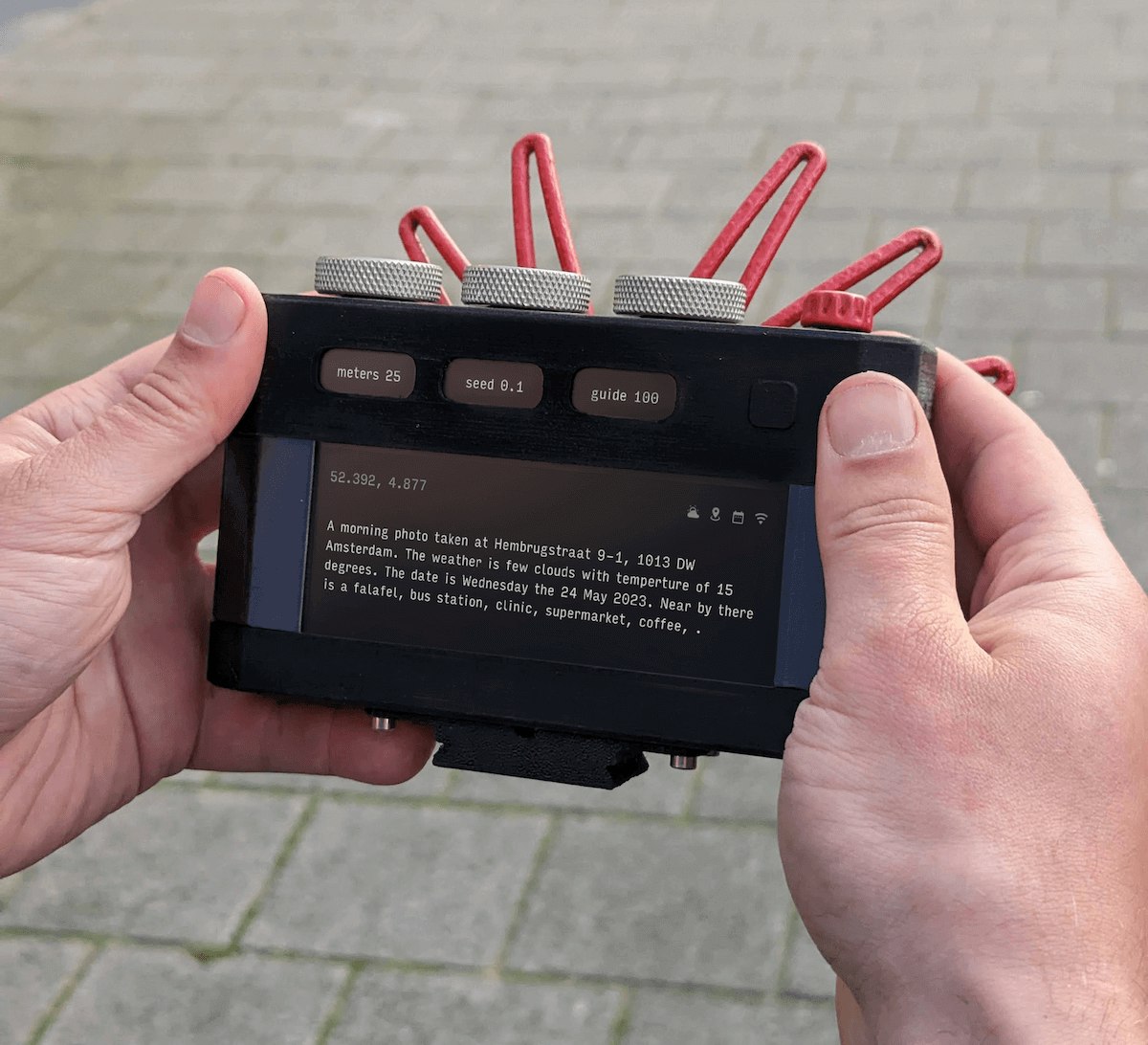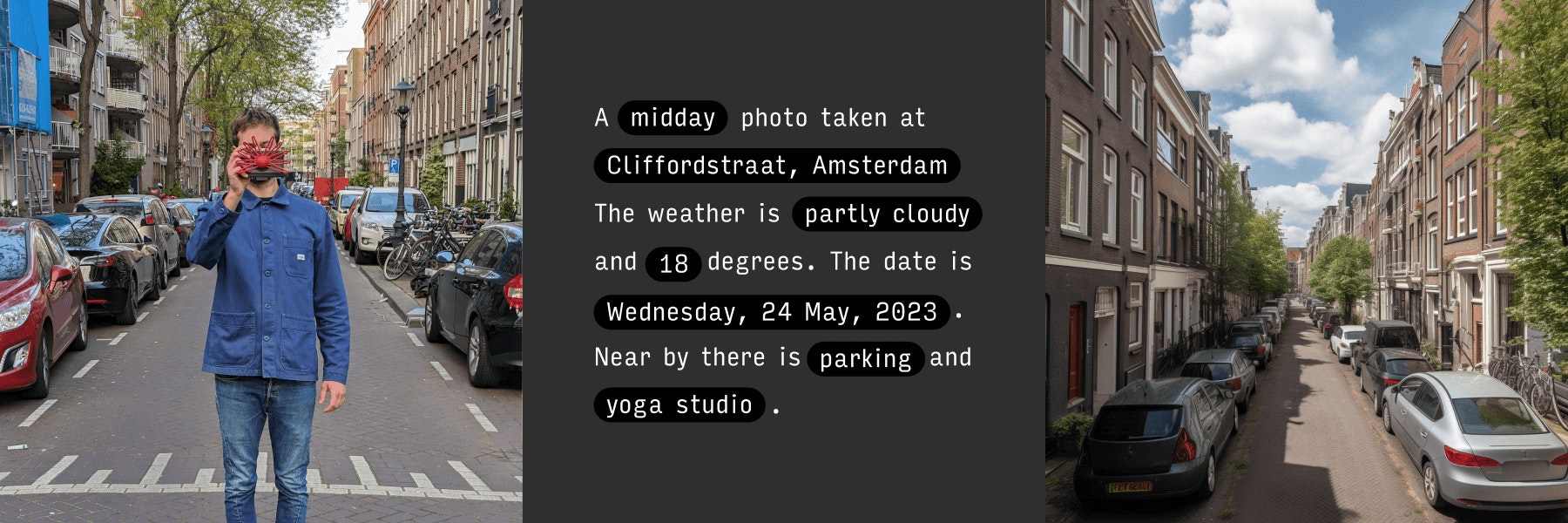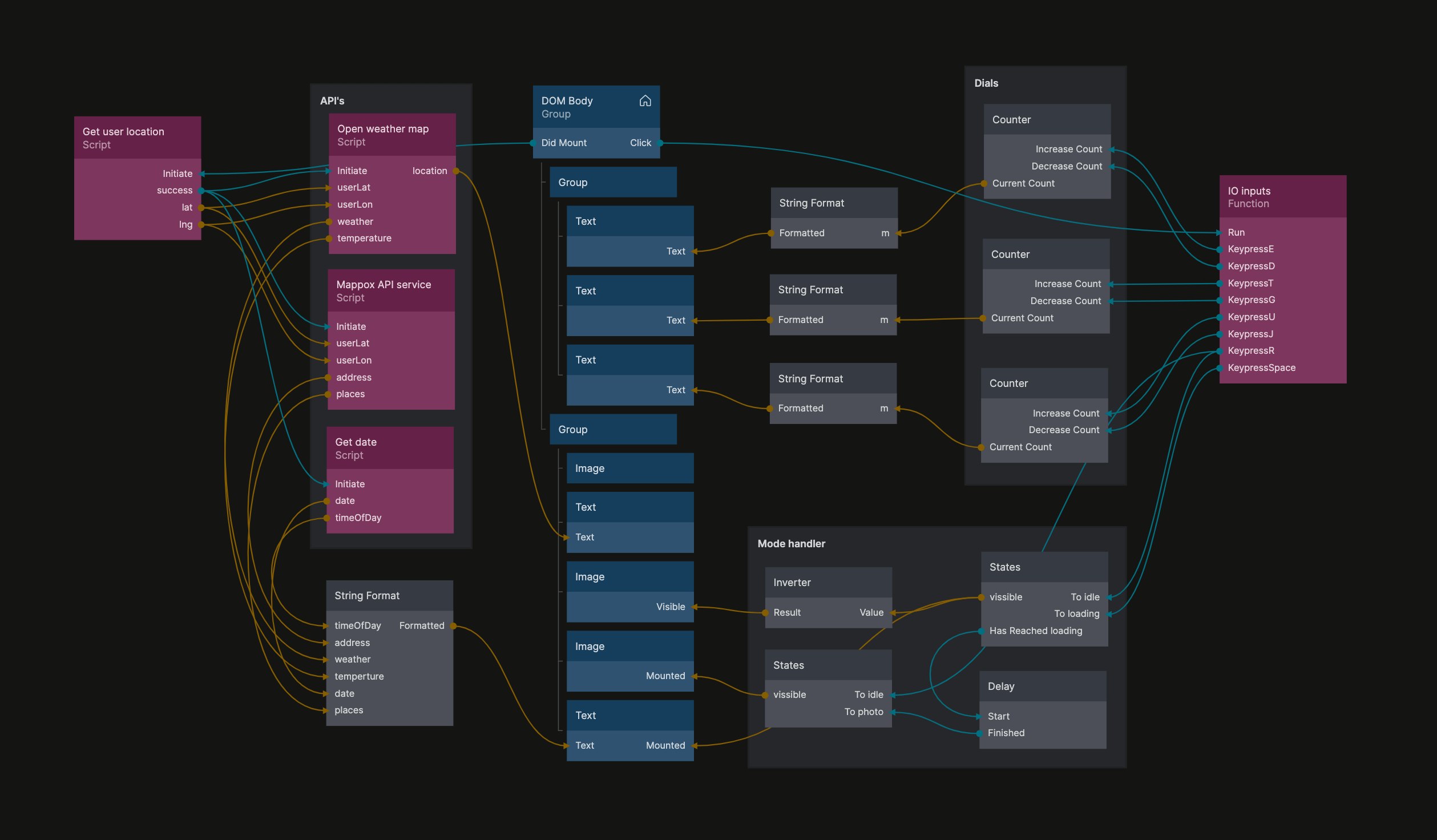Revolutionary Camera 'Paragraphica' with Image Generation Feature Transforms Photography | Release #48

An innovation has finally emerged that fundamentally changes the concept of traditional photography. Introducing the revolutionary camera 'Paragraphica' developed by Dutch designer Bjørn Karmann.
A Camera That Captures Information, Not Light
Paragraphica is a camera without a lens to gather light. Instead, it collects data such as location, weather, and time, and uses AI from to generate images. In other words, it creates an 'image' of the place through data and AI interpretation, rather than capturing the real scenery directly.

©︎ Bjørn Karmann
The back monitor of Paragraphica displays text, and when the shutter is pressed, an image is created by AI based on this prompt.
A Paradigm Shift in the Concept of Photography
The revolutionary feature of 'Paragraphica' is that photography has transformed from an output device to an input device. Traditional cameras were tools to capture and record reality as it is, but 'Paragraphica' collects data about the place, and AI interprets and reconstructs it to create new images from nothing, from zero to one. This process questions the fundamental purpose of photography and suggests that the evolution of camera mechanisms is shifting from recording to creation.

©︎ Bjørn Karmann
(Left) is a photo taken with the camera, (Center) is the prompt at the time of shooting, (Right) is the 'photo' generated by Paragraphica.
The system is connected to the internet and collects real-time data such as location information, time, and weather of the shooting location. The collected information is converted into a prompt by the camera, and based on this prompt, generative AI creates the image.
Sense with Physical Limitations at the Time of Shooting
A point where the designer's sense is reflected is that the image generation by AI is formed by 'physical' limitations.
General AI image generation tools can generate arbitrary images from a wide range of data, but the images generated by 'Paragraphica' are based on data from specific locations captured by the camera. In other words, Paragraphica generates images that reflect the characteristics and atmosphere of the place with more accurate information for location reproduction. This small attention to detail will be the key to providing a photo experience with deeper meaning, where the uniqueness of the shooting location and the photographer's experience merge.

©︎ Bjørn Karmann
Visual design and dynamic data Noodl screenshot. Communication is built between the camera and multiple APIs to generate prompts and the image itself based on location information.
Images Woven by AI and Human Cognition
How does AI 'see' the world, or more precisely, how does it 'weave' it? Considering how the differences between AI-generated photos and human cognition arise, the concept of photography holds the potential to change fundamentally. 'Paragraphica' mimics non-human perception, and the resulting images differ from the visual representation of reality offered by traditional photography. Simultaneously, if we find reality in the mimicked images, it will become increasingly difficult to assert that photography is a mirror reflecting reality. If experiencing the world through AI's perspective influences our cognition, photography could open up possibilities as a tool for interpretation and expression, rather than just a recording medium.
As in the example of the content below, various discussions are already underway regarding the institutional design for photos (or photo-like images) involving AI.
Will photos taken with 'Paragraphica' update the concept of photography, or will they disappear in an ambiguous boundary between photos and generated images? We want to focus on future technological developments.



